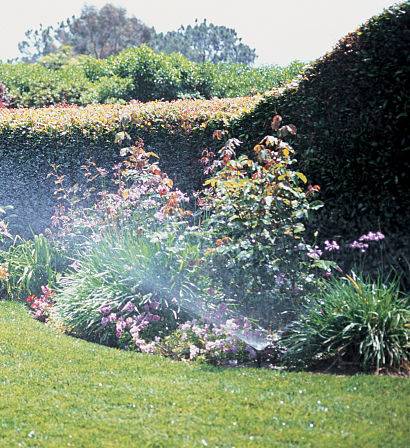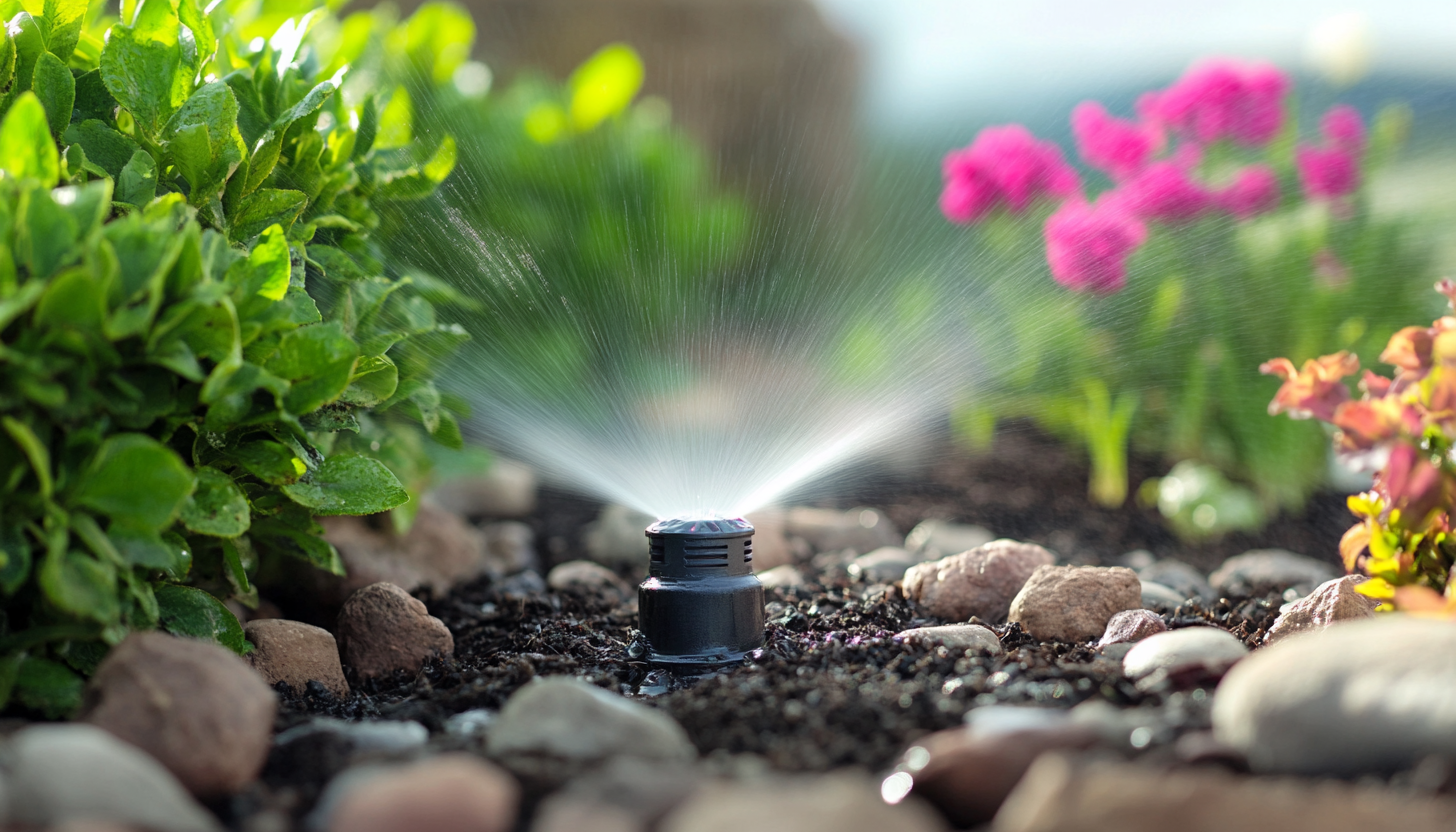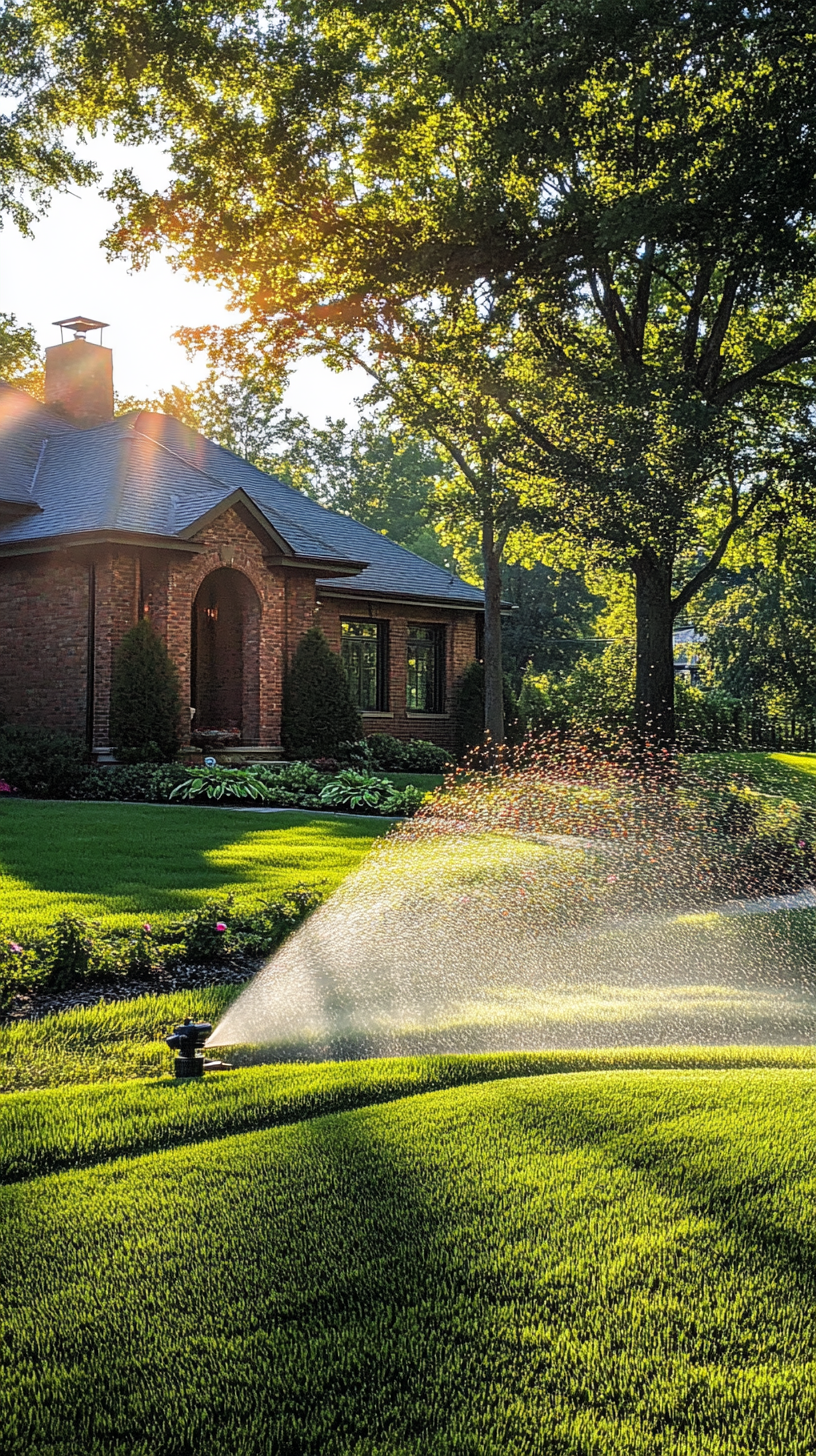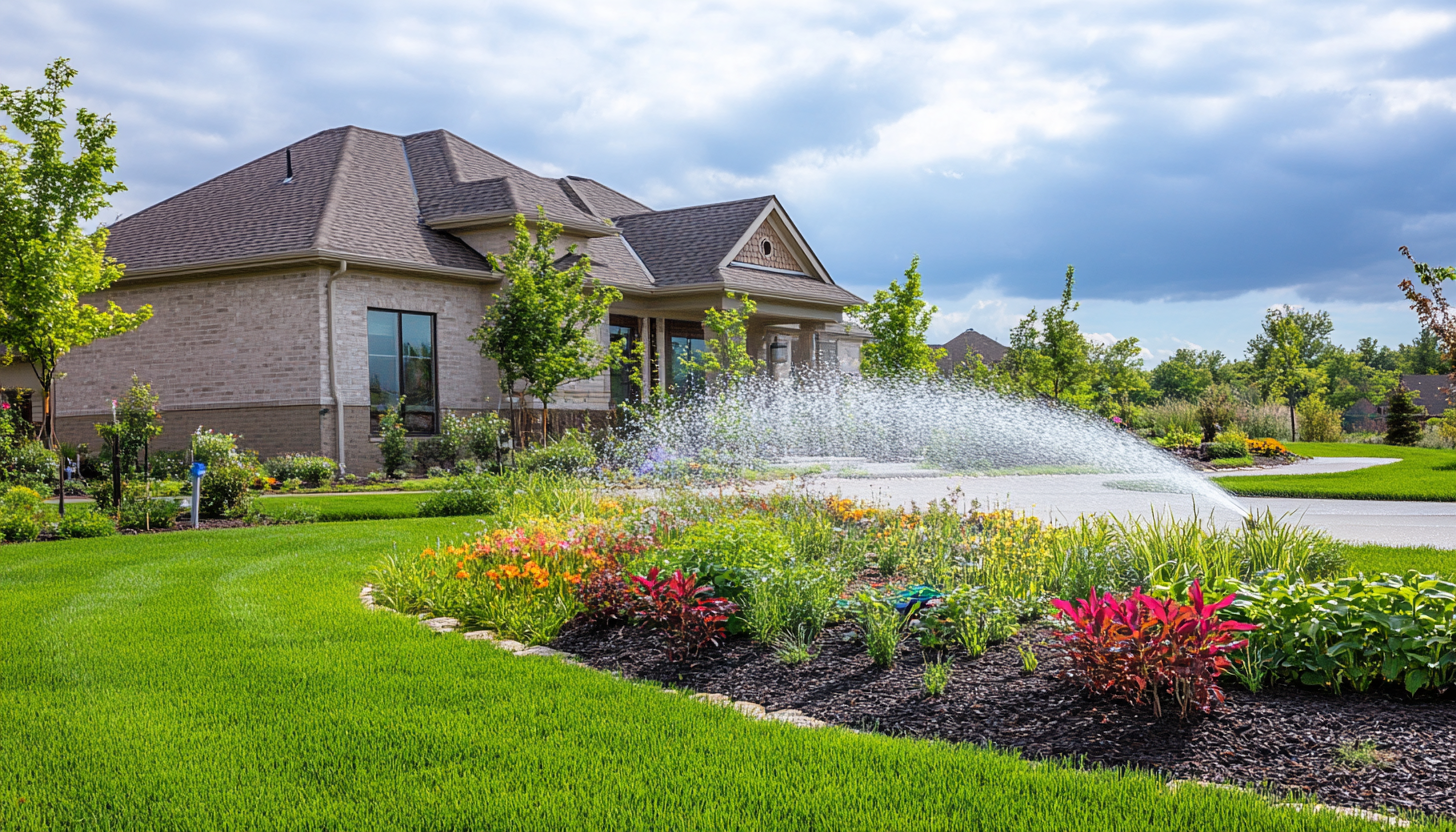How Do In-Ground Sprinklers Work?
How Do In-Ground Sprinklers Work?
In-ground sprinkler systems are the best and most efficient way to water your landscape without wasting valuable water.
Because sprinkler heads are strategically placed and the water output is carefully timed, in-ground sprinkler systems give you the utmost control over how and when your yard is watered.
While the benefits of an in-ground watering system are evident, many potential buyers wonder not why they should invest in an irrigation system, but rather how do in-ground sprinklers work?

In-ground Sprinklers: The Basics
In a typical system, a network of retractable sprinkler heads is buried about 12 inches below the surface. Each sprinkler head is strategically placed based on the sun exposure, elevation and zones of the surrounding landscape. Water is carried throughout the pipe by way of a pressure system that works as follows:
In-ground Pressure Systems
1.) An electronic controller tells the water valves when to open and when to close.
2.) Once activated, water is pushed through the pipe and forces the sprinkler head above ground.
3.) When the water pressure stops, the head retreats back underground.

In-Ground Water Sources
So pretty simple, when the controller is activated, water is released and the sprinkler begins. But where does the water come from? In-ground sprinkler systems pull their water from one of two sources. This is the major differentiator between a pump system and a metered water system.
- Pump systems pump water into the sprinkler from a body of water, like a lake or a pond. This allows homeowners to service their system without taking on additional water costs.
- Metered water systems are usually tied to the home's existing water lines and are serviced by the local utility department. While this involves additional water costs, the service can be more reliable than a pump system.
To really grasp how do in-ground sprinklers work, you must understand that everything begins and ends with the controller.
The above-ground controller is attached to a set of water valves at the start of the system. This initial set of valves is where the main water source enters the system before it is distributed to the rest of the sprinklers.
The controller is designed to release each valve individually, telling the valves when to open, how much water to release and when to turn off. Automatic controllers follow this process automatically, while less expensive manual controllers turn on and off with the push of a button.
Advanced Features of Modern Controllers
Understanding the Controller
The controller is more than an on/off switch—it’s the brain of the system. Today’s controllers offer:
- Weather Sensors: Automatically adjust schedules based on rainfall or temperature.
- Smartphone Integration: Allows remote control and monitoring of your sprinkler system.
- Zone Customization: Tailors watering times and flow rates for each part of your yard.
This level of control not only saves water but also ensures your lawn and garden receive consistent care.

The Role of Sprinkler Heads in Water Distribution
Understanding how sprinkler heads work can help homeowners appreciate the precision of in-ground systems. These heads are designed to:
- Pop-Up Action: When the system is activated, water pressure raises the heads above ground to distribute water.
- Coverage Control: Adjustable nozzles allow targeted watering to avoid over-saturating or missing certain areas.
- Efficiency: Modern sprinkler heads reduce water waste with features like low-angle spray patterns or drip emitters for delicate plants.
Each sprinkler head is strategically placed to account for sun exposure, landscape elevation, and plant type, ensuring optimal performance.
Pump vs. Metered Systems: Which is Right for You?
While the basics of how does a sprinkler work remain the same, the water source significantly impacts system efficiency:
- Pump Systems: Great for properties near lakes or ponds. These systems are cost-effective but may require additional maintenance to address fluctuating water levels or debris.
- Metered Systems: Ideal for urban areas with reliable municipal water lines. While they come with utility costs, these systems require less upkeep.
Our experts can evaluate your property to recommend the best option for your landscape.
In-Ground Lawn Sprinkler System: Maximizing Efficiency and Lawn Health
An in-ground lawn sprinkler system isn’t just about convenience—it’s about precision, efficiency, and long-term lawn health. While the basics of how these systems operate are widely known, many homeowners overlook the advanced strategies and technologies that make in-ground systems a superior choice for modern landscaping.
The Advantages of an In-Ground Lawn Sprinkler System
In-ground sprinkler systems offer unmatched control over lawn care by delivering water directly to where it’s needed most. The combination of strategic placement, automated scheduling, and advanced controller systems ensures consistent coverage without overwatering or missing dry patches.
One of the standout benefits of an in-ground system is its ability to be customized into zones. Different parts of your lawn—such as shaded areas, sunny patches, or garden beds—often have unique watering needs. With an in-ground lawn sprinkler system, each zone can be programmed independently to deliver the ideal amount of water, taking factors like soil type, grass variety, and sun exposure into account.
Additionally, these systems minimize water waste. Features like rain sensors and smart controllers prevent unnecessary watering after rainfall, while adjustable sprinkler heads ensure water isn’t wasted on sidewalks or driveways.

Custom Design for Every Lawn
No two lawns are exactly alike, and that’s why a one-size-fits-all approach to in-ground sprinkler systems simply doesn’t work. Professional installation begins with a comprehensive lawn assessment, considering factors like elevation changes, soil type, and sun exposure.
Sprinkler heads are strategically placed based on these assessments. For example:
- Pop-Up Sprinkler Heads are ideal for flat lawns and open spaces.
- Rotary Sprinkler Heads work well for larger areas requiring longer water streams.
- Drip Irrigation Zones may be added for flower beds or vegetable gardens that require slow, precise watering.
Proper zoning and smart placement not only guarantee even water distribution but also prevent problems like water pooling or runoff, which can lead to lawn damage or wasted water.

Smart Technology Integration in In-Ground Systems
Modern in-ground lawn sprinkler systems have evolved far beyond simple timers and manual valves. Smart controllers allow homeowners to manage their watering schedules from a smartphone or tablet, offering unprecedented flexibility and convenience.
These systems can adapt to real-time weather data, automatically adjusting watering schedules based on factors like rainfall, humidity, and temperature. Some even use soil moisture sensors to ensure that watering only happens when necessary, optimizing both water conservation and lawn health.
For example, if heavy rainfall is detected, the system will automatically skip its next cycle. If a heatwave is forecasted, it can adjust to provide deeper, more frequent watering sessions.

Why Professional Installation Matters
While it’s possible to attempt a DIY installation, the precision and long-term performance of an in-ground lawn sprinkler system depend heavily on professional expertise. Proper trenching, zoning, and placement of sprinkler heads require a deep understanding of water pressure, coverage patterns, and soil conditions.
Professionals also ensure compliance with local regulations, such as backflow prevention requirements, which are essential for protecting your water supply from contamination. Additionally, expert installation minimizes the risk of common problems like uneven watering, system leaks, or premature equipment failure.
Maintenance for Long-Term Success
Regular maintenance is essential to keeping an in-ground lawn sprinkler system running smoothly. Seasonal tasks like spring start-ups and winterization are crucial to prevent damage caused by freezing temperatures or dormant periods.
A professional mid-season inspection can also catch issues early, such as clogged sprinkler heads, misaligned nozzles, or damaged pipes, ensuring your system continues to operate efficiently all season long.
Find Out How Do In-Ground Sprinklers Work With Us
If you are looking to get started with a system of your own or would like more information on how do in-ground sprinklers work, give our expert team at American National Sprinkler & Lighting a call at (847) 566-0099 or schedule a free quote.
